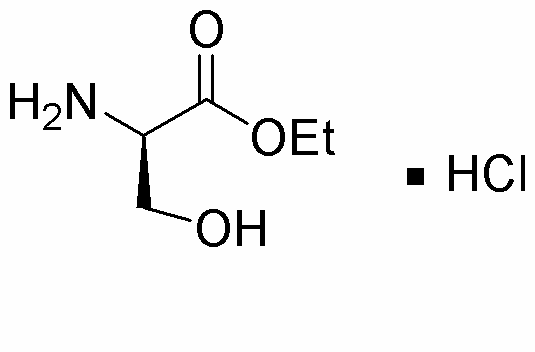D-Serine ethyl ester hydrochloride is widely utilized in research focused on:
- Neuroscience Research: This compound plays a crucial role in studying neurotransmission, particularly in the context of NMDA receptor modulation, which is vital for understanding various neurological disorders.
- Pharmaceutical Development: It serves as a potential therapeutic agent for conditions like schizophrenia and depression, offering a unique mechanism of action compared to traditional treatments.
- Biochemical Studies: Researchers use it to investigate the role of serine in metabolic pathways, providing insights into amino acid metabolism and its implications in health and disease.
- Drug Formulation: Its properties make it suitable for developing new drug formulations that require specific solubility and absorption characteristics, enhancing bioavailability.
- Clinical Trials: The compound is being evaluated in clinical settings for its efficacy and safety, paving the way for innovative treatment options in mental health.
General Information
Properties
Safety and Regulations
Applications
D-Serine ethyl ester hydrochloride is widely utilized in research focused on:
- Neuroscience Research: This compound plays a crucial role in studying neurotransmission, particularly in the context of NMDA receptor modulation, which is vital for understanding various neurological disorders.
- Pharmaceutical Development: It serves as a potential therapeutic agent for conditions like schizophrenia and depression, offering a unique mechanism of action compared to traditional treatments.
- Biochemical Studies: Researchers use it to investigate the role of serine in metabolic pathways, providing insights into amino acid metabolism and its implications in health and disease.
- Drug Formulation: Its properties make it suitable for developing new drug formulations that require specific solubility and absorption characteristics, enhancing bioavailability.
- Clinical Trials: The compound is being evaluated in clinical settings for its efficacy and safety, paving the way for innovative treatment options in mental health.
Documents
Safety Data Sheets (SDS)
The SDS provides comprehensive safety information on handling, storage, and disposal of the product.
Product Specification (PS)
The PS provides a comprehensive breakdown of the product’s properties, including chemical composition, physical state, purity, and storage requirements. It also details acceptable quality ranges and the product's intended applications.
Certificates of Analysis (COA)
Search for Certificates of Analysis (COA) by entering the products Lot Number. Lot and Batch Numbers can be found on a product’s label following the words ‘Lot’ or ‘Batch’.
Numéro de catalogue
Numéro de lot/série
Certificates Of Origin (COO)
This COO confirms the country where the product was manufactured, and also details the materials and components used in it and whether it is derived from natural, synthetic, or other specific sources. This certificate may be required for customs, trade, and regulatory compliance.
Numéro de catalogue
Numéro de lot/série
Safety Data Sheets (SDS)
The SDS provides comprehensive safety information on handling, storage, and disposal of the product.
DownloadProduct Specification (PS)
The PS provides a comprehensive breakdown of the product’s properties, including chemical composition, physical state, purity, and storage requirements. It also details acceptable quality ranges and the product's intended applications.
DownloadCertificates of Analysis (COA)
Search for Certificates of Analysis (COA) by entering the products Lot Number. Lot and Batch Numbers can be found on a product’s label following the words ‘Lot’ or ‘Batch’.
Numéro de catalogue
Numéro de lot/série
Certificates Of Origin (COO)
This COO confirms the country where the product was manufactured, and also details the materials and components used in it and whether it is derived from natural, synthetic, or other specific sources. This certificate may be required for customs, trade, and regulatory compliance.


